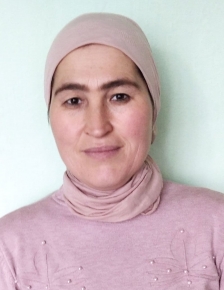|
Sections /Trainer
|
Time
|
Instructions
|
Materials
|
Note
|
|
Building Routines in English classrooms
|
|
Warm up
Trainer 1:
|
9:00-9:25
|
Entrance tickets:
Each participant should write one of the six principles and explain the meaning briefly on a sticky note.
Song. Show or distribute text of the song. First sing it yourself, then involve all participants and sing together.
Hello everybody how are you today
It is time to move your body and learn and play
Hello to my teachers how are you today
I am gonna listen to what you say
shake your head yes shake your head no
Let your arms up ,put your arms down
Let your arms up and shake it round again
Ask PP if they liked the song.
Ask if they use songs in their lessons and when they use them: at the beginning, in the mid or at the end. Also ask them how often they use songs in their lessons.
|
PPPT with the text of the song or handouts.
|
|
|
Inform learners of objectives
Trainer 2
|
9:25-9:40
|
Turn and talk. Tell PP to express their ideas on the quote: ‘Tell me and I forget, Teach and I remember, Involve me and I learn’
In pairs, PP will tell each other their ideas about this quote. Then they can share ideas to the whole class.
When they finish the discussions, introduce the objectives of the session:
- TWBAT to use effective activities to make routines of the lesson
- They will differentiate types of lesson activities and use them in appropriate parts of the lesson.
|
PPPT or a boarding card with written objectives
|
|
|
Stimulate recall of prior learning
Trainer 1
|
9:40-9: 50
|
Ask the questions:
“What is routine?”
Ask PP to tell their answers to their peers.
Mini-lecture on benefits of using routine activities on the quality of the lesson (learners feel less anxious as steps are predictable, they act more independently as they have already experienced the same activities before)
Trainer: (mini-lecture)
Effective classroom routines have purpose and meaning far greater than simple management. As
you strive to establish good routines toward a communicative language classroom environment,
your students will increase in learning and use of the target language. This module will help you
explore different classroom routines you can apply to your teaching context while using English. Routines are important for promoting classroom management and establishing shared
expectations with your students. Students learn with less stress in environments with structure
and routines. Establishing routines can also develop students’ independent learning habits
because they know what to do with confidence.
|
A white board
|
|
|
Present the content
Trainer 2
|
9:50- 10:10
Video duration is also included here.
(7,15 minutes)
|
1. Trainer distributes participants a Routine chart for each and they should fill it while watching the video.
Routine Chart:
|
Name of Routine
|
When to use
|
Purpose
|
|
|
|
|
|
|
|
|
2.Tell the PP to watch the
Video from TETE Building Routines: “Start Up” Language Routines. (6 minutes) and complete the Routine Chart.
|
Routine charts
|
|
|
Guide learning
Trainer 1
|
10:10-10:20
|
Thumbs up and thumbs down.
Trainer reads statements about using routines in English classrooms and the participants should make a sign Thumbs Up if they think it is true, and Thumbs Down if they think it is false.
e.g.
1.Routines help to promote classroom engagement (Thumbs up 👍)
2. Routines help only teachers to teach(Thumbs Down 👎)
|
Statements about routines.
|
|
|
Experimental activity
“Do Now” routines
Trainer 2
|
10:20-10: 50
|
Trainer gives examples for Do Now routines.
1) Turn to page 15 in your book and begin reading the passage.
2) Take out your homework and begin checking answers with a classmate.
3) Open to page 30 and begin exercise A.
4) Take out a piece of paper and write 2-3 questions you have about today’s topic.
-Divide participants into 4 groups by colored papers(red, yellow, green, blue). Distribute colored papers, participants will find their groups according their cards.
- In groups, participants should create new Do Now routine statements.
-When they have finished, they will do the Mingling activity “Give one, get one”, that’s they will go around the classroom and share their Do Now statements, each will read one and write one that they hear from other participant.
|
Ice cream sticks
|
|
|
Experimental activity
Clock up mingle
Trainer 1
|
10:50-11:00
|
Describe the clock up mingle:
Clock Partners: A Pairing Strategy
1.Distribute each participant a Clock graphic organizer.
2. Tell PP they will be practicing “Clock Partners” mingling.
Trainer: In this activity, you will go around the classroom to talk to different participants. First, put the name of your partner to the number of the clock, then write down the daily routine s/he shared .
- Based on the clock, each person will have twelve different partners to meet. Their names will be
on each hour of the clock.
|
Picture of clocks
|
|
|
Elicit performance practice
Trainer 2
|
11:00- 11: 30
|
Practice Clock Partners Mingle.
Ask PP to share what unique Routines (not mentioned in the videos ) they use in their classroom. First give PP time to think and write a short description for their unique routine.
Ask one or two participants to share it in plenary.
Mingling: Ask PP to go around the classroom and ask about their unique routines. They will mingle around the classroom and fill the clocks with the names of participants and their daily routines
|
|
|
|
Wrap up Routines /Exit ticket
Trainer 1
|
Lunch time:
11:30-12: 00
12:00-12: 30
|
Ask PP the question:
“How do you end your lessons?”
They should share their experiences.
Present the Wrap Up routines and Exit tickets .
For the wrap up at the end of a lesson, you can set up instructional routines such as paired or
group reflection for sharing. Your reflective wrap-up questions can be:
• What is one thing that you learned today?
• What is one question that you still wonder?
• What is one way someone helped you to learn?
For example, you can write on the board, and say:
• “Class, let’s read the wrap up questions on the board.”
• “Class, let’s take a look at the wrap up questions on the board.”
• “Class, let’s think about these reflection questions as our wrap-up.”
• “Can I have someone volunteer to read the wrap up questions?”
Divide class into two groups: A and B.
Group A should create questions for Wrap Up routines.
Group B should create statements for Wrap Up routines.
They should write them into boarding cards.
|
Markers/ Boarding cards
|
|
|
Provide feedback
Both trainers facilitate.
|
12:30-13:00
|
In groups, participants will present their boarding cards each other and evaluate the questions/ statements in 1-5 Scale.
|
Sticky notes
|
|
|
Assess performance
|
13:00-13: 15
|
Exit ticket 3-2-1. PP will write three routines they have learned during the session, two routines they have applied, one question they have.
PP will write them on a sheet of paper and hand it to the trainer.
The trainer will collect all sheets of paper in order to reflect on whether the session outcomes are achieved.
|
Cards
|
|
|
Assign task for further development
|
13:15-13:30
|
Before participants leave the workshop, ask them which routine activity they liked the best and write them into their Activity Tracker.
Home assignment: Write reflection on the session into their portfolio.
|
|
Activity tracker is provided in previous session.
|




